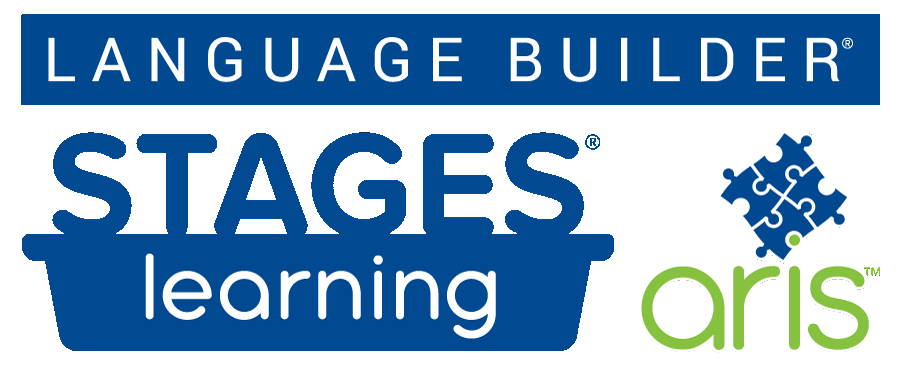
Helping autistic children develop a growth mindset can foster greater learning, confidence, and success in school.
|
“It’s okay for me to make mistakes” “When I put forward more effort, I improve!” “I can do hard things” |
These are all examples of statements made by individuals who have a growth mindset as opposed to a fixed one. According to Dr. Carol Dweck, our mindset, the attitudes we have about things, includes the ways we see ourselves and our abilities. Dr. Carol Dweck describes two types of mindsets: A fixed mindset is when people believe they cannot change their abilities (such as when learning a new skill) and a growth mindset is when people believe they can change their abilities and learn new things with effort and persistence (Beurkens, 2019).
Dr. Dweck’s research highlights the differences between children with fixed and growth mindsets and the implications for educational success. Children with fixed mindsets typically struggle when they make mistakes, finding it difficult to persevere through challenging situations or problems, and thus do not perceive themselves as able to grow or learn something new. In contrast, children with growth mindsets embrace mistakes and approach challenges head-on, with courage and perseverance understanding that change and improvement are possible (Beurkens, 2019).
 Growth mindsets for autistic children are especially significant. Autistic children, like many children with disabilities, are at a higher risk of having a negative or fixed mindset when thinking about their abilities (Beurkens, 2019). Often, children with disabilities spend more time focusing on their challenges and failures as opposed to their strengths. The societal perception of individuals with disabilities does not help and this can result in children with disabilities being unable to recognize their potential. Thus, it is so important to teach your autistic child ways to have a growth mindset so that they can become comfortable with taking risks, making mistakes, and displaying effort. Check out the tips below for ways to teach your autistic child to have a growth mindset.
Growth mindsets for autistic children are especially significant. Autistic children, like many children with disabilities, are at a higher risk of having a negative or fixed mindset when thinking about their abilities (Beurkens, 2019). Often, children with disabilities spend more time focusing on their challenges and failures as opposed to their strengths. The societal perception of individuals with disabilities does not help and this can result in children with disabilities being unable to recognize their potential. Thus, it is so important to teach your autistic child ways to have a growth mindset so that they can become comfortable with taking risks, making mistakes, and displaying effort. Check out the tips below for ways to teach your autistic child to have a growth mindset.
-
Model
Just as we would model how to do everyday tasks for our autistic children, it is important to also model the growth mindset! For example, you might model the growth mindset by responding positively to a mistake. This would include pointing out the mistake explicitly, and modeling how you would use self-talk to work through the mistake. For example, if you spill your coffee on your shirt as you are walking to your car, you can say, “Oops, I just spilled my coffee. No worries, I’ll just grab a napkin and clean it up so the stain won’t be as bad!” This positive self-talk not only normalizes mistakes, but it shows your autistic child that the mistake is not something to get extremely upset over.
-
Embrace Mistakes
 In a similar vein, it is important to embrace mistakes, and even consider making them on purpose as a teachable moment for your autistic child. By seeing you embrace mistakes, your autistic child will eventually learn to embrace mistakes as well. You can even call their attention to a mistake you have just made and explain that you know next time you will work to avoid making that same mistake because we learn and grow from our mistakes.
In a similar vein, it is important to embrace mistakes, and even consider making them on purpose as a teachable moment for your autistic child. By seeing you embrace mistakes, your autistic child will eventually learn to embrace mistakes as well. You can even call their attention to a mistake you have just made and explain that you know next time you will work to avoid making that same mistake because we learn and grow from our mistakes.
-
Demonstrate Taking Risks
One huge component of a growth mindset is the ability to think flexibly. That includes being willing to take risks with effort, persistence, and a positive approach to challenges. One way to support your autistic child with taking risks is to expose them to examples of individuals who take healthy risks. Showing child-appropriate movies, videos, or TV shows of characters who take risks can help your child understand that healthy risk-taking is okay! Modeling this practice is useful as well: you may consider some things you find especially risky or scary, and try to come out of your comfort zone to take a risk to show your autistic child that a healthy risk now and then can be a positive experience. Whenever you notice your child taking even a small risk, point it out to them and offer encouragement and support for taking a healthy risk.
-
Ask for Help
We are all still learning, no matter our age, which means that you are never too old to ask for help! Doing so not only contributes to your growth and development but also shows your autistic child that asking for help is a positive thing. For instance, if you make a mistake, you may seek out your child’s assistance in fixing the mistake. Doing so shows them to not only embrace mistakes but to also see an example of someone asking for help. This can provide another form of support when facing tough or challenging situations.
-
Get Active to Encourage Physical Effort
 Physical activity for autistic students can have a multitude of positive effects and can be a great way to teach the concept of effort. One way to teach effort using physical activity is by engaging your child in a task that requires a good amount of physical effort, like carrying grocery bags into the house, or taking a big load of laundry out of the washing machine and putting it into the dryer. Then, engage in a conversation with your child about the effort you both demonstrated and how it helped accomplish a goal.
Physical activity for autistic students can have a multitude of positive effects and can be a great way to teach the concept of effort. One way to teach effort using physical activity is by engaging your child in a task that requires a good amount of physical effort, like carrying grocery bags into the house, or taking a big load of laundry out of the washing machine and putting it into the dryer. Then, engage in a conversation with your child about the effort you both demonstrated and how it helped accomplish a goal.
-
Do Tasks Together
Similarly, when teaching your autistic child about a growth mindset, do not underestimate the value of doing different tasks and activities together. This can help your autistic child approach large tasks with a positive, growth-mindset attitude. While doing a task together, be sure to provide a lot of praise and encouragement throughout the process. Consider breaking large tasks down into smaller chunks, so it doesn’t feel immediately overwhelming to your child.
-
Change Your Language
A huge component of developing a growth mindset is the language that we use when we talk to others and ourselves. The language differences between a growth mindset and a fixed mindset are stark: fixed mindset language reflects inflexible thinking, while growth mindset reflects more of a flexible thought process. One key way to help your autistic child develop a growth mindset is for you to change the language that you use to model this difference for your child. For example, instead of saying, “I give up,” try saying “I’ll use some of the strategies I’ve learned.” One of my favorites is instead of saying “Plan A didn’t work,” try saying or thinking, “Good thing the alphabet has 25 more letters!” This shift in thinking and speaking will undoubtedly reflect in you and your child’s approach to challenges and difficult situations.
-
Be Mindful of Your Mindset
 Changing your language to reflect more of a growth mindset orientation can only happen if you are reflective and mindful of the mindset that you currently possess. Children pick up and mirror our words, feelings, and approaches to different situations. Being mindful of your mindset can allow you to reflect on where you could be more growth-oriented, and thus demonstrate more flexible thinking.
Changing your language to reflect more of a growth mindset orientation can only happen if you are reflective and mindful of the mindset that you currently possess. Children pick up and mirror our words, feelings, and approaches to different situations. Being mindful of your mindset can allow you to reflect on where you could be more growth-oriented, and thus demonstrate more flexible thinking.
-
Engage in Conversation About Mindset
As your autistic child gets older, it’s a great idea to begin engaging them in conversations about mindset more generally. Showing them examples of a growth mindset from an early age is extremely important, but as they develop language, it would be helpful to discuss with them the differences between language that shows more of a growth mindset vs. language that shows more of a fixed mindset. You should also discuss with your child why having a growth mindset is so important.
-
Share Success Stories
Finally, share some success stories of individuals who have accomplished a daunting task using a growth mindset. Acknowledge the effort they put in, emphasizing to your autistic child that effort and perseverance can help them in difficult tasks. For young autistic children, you may consider using storybooks to help share success stories. For instance, Beautiful Oops, The Most Magnificent Thing, and The Dot are all great storybooks that help to teach the growth mindset and can help you share success stories using the characters in these books as examples.
References
Beurkens, N. (2019, December 30). Growth Mindset for Children with ADHD, Anxiety, Autism, and Other Challenges – Part 1. Retrieved November 11, 2020, from https://www.horizonsdrc.com/blog/growth-mindset-part1





